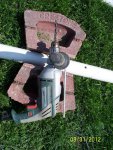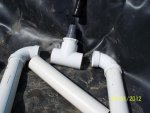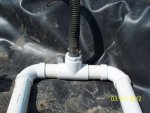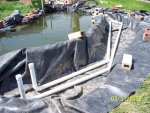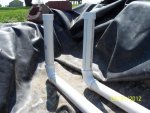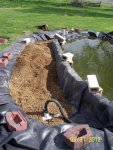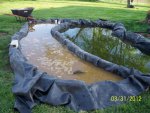Before reading the rest of this post, please understand it is not my intent to offend anybody who either has or advocates "bogs", but rather to present my view on the mater and try and understand and hear from those who may use this system, their own understanding and experience with "bogs". Comment both pro and con are welcome. :razz:
To my understanding these bogs are, in essence, gravel or rock beds, that the pond water flows through. Correct me if I'm wrong?
The problem that I see with them is that over time they can, and will, collect organic sediment. Of course you really won't be able to see it because it will be covered by the rocks, but that doesn't mean that it's not there. So is there a problem with that? To my thinking, yes. That organic sediment inevitable begins to break down anaerobically, and when it does it produces hydrogen sufide (H2S) which of course is deadly toxic, not only to fish, but to humans as well.
Thing is, as long as that rotting organic mater is left undisturbed it will generally only release small quantities of H2S at a time, and fish (and humans) are able to tolerate low levels of this chemical. What I see as the problem is that over time more and more of this rotting organic mater will build up, and at some point it's going to be producing more H2S than the fish will be able to tolerate, then you will have a real, but unseen problem on your hands. I also would question why, if we are aware of this hidden problem, anybody would want to incorporate a "filter" system that has this potential for building and releasing any quantity of this deadly chemical into the environment with their fish (or other pond critters)?
Here is a short video of a sort of "bog", or "media bed" as it is referred to here, that is set up that is being used as a sort of hydroponic system for growing plants.
I will concede that this may be a more extreme case of this H2S producing organic sediment build up, but I think that any "bog" will eventually build up the same sort of organic sediment and also produce H2S.
To my understanding these bogs are, in essence, gravel or rock beds, that the pond water flows through. Correct me if I'm wrong?
The problem that I see with them is that over time they can, and will, collect organic sediment. Of course you really won't be able to see it because it will be covered by the rocks, but that doesn't mean that it's not there. So is there a problem with that? To my thinking, yes. That organic sediment inevitable begins to break down anaerobically, and when it does it produces hydrogen sufide (H2S) which of course is deadly toxic, not only to fish, but to humans as well.
Thing is, as long as that rotting organic mater is left undisturbed it will generally only release small quantities of H2S at a time, and fish (and humans) are able to tolerate low levels of this chemical. What I see as the problem is that over time more and more of this rotting organic mater will build up, and at some point it's going to be producing more H2S than the fish will be able to tolerate, then you will have a real, but unseen problem on your hands. I also would question why, if we are aware of this hidden problem, anybody would want to incorporate a "filter" system that has this potential for building and releasing any quantity of this deadly chemical into the environment with their fish (or other pond critters)?
Here is a short video of a sort of "bog", or "media bed" as it is referred to here, that is set up that is being used as a sort of hydroponic system for growing plants.
I will concede that this may be a more extreme case of this H2S producing organic sediment build up, but I think that any "bog" will eventually build up the same sort of organic sediment and also produce H2S.


